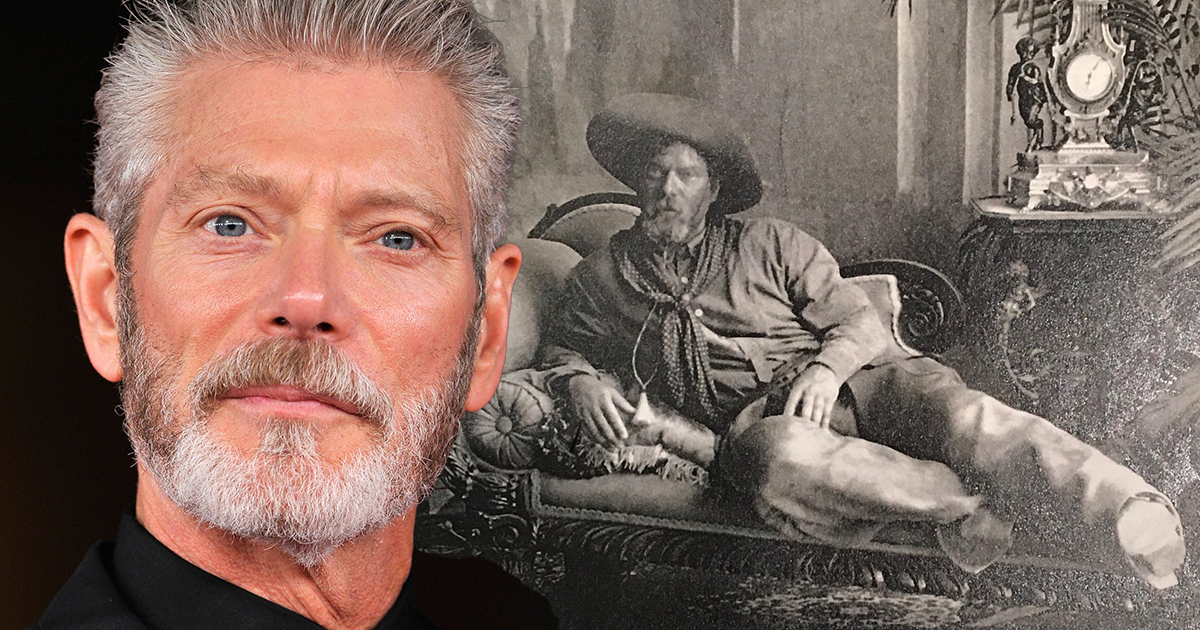1993’s Tombstone capitalised on the brief resurrection of the Western, the time-honoured genre having enjoyed a revival thanks to such Oscar-laden hits as Unforgiven and Dances with Wolves.
Featuring a star-studded cast headed up by Kurt Russell and Val Kilmer, Tombstone draws on the true stories of some legendary historical figures from America’s old west. Join us as we holster our guns and become hired factslingers for this underrated movie.
20. The lawmen, outlaws and events depicted in the film were real

Tombstone is based on historical events that took place in Tombstone, Arizona during the 1880s. This includes the legendary Gunfight at the O.K. Corral, which was a 30-second shootout between lawmen and a group of outlaws. These outlaws – and the lawmen that pursued them – are real, and include Wyatt Earp, Doc Holliday and William Brocius. But this is not one of those films that rehashes history to be more explosive on the silver screen. In fact, the film is painstakingly faithful to the lives of its characters and the events that take place, and it’s all the better for it. Many of Doc Holliday’s lines – such as the infinitely quotable “you’re a daisy if you do!” – are taken almost word-for-word from contemporary newspaper reports.
Plus, Wyatt Earp really did wade into a creek in a barrage of gunfire, delivering justice to Curly Bill. That wasn’t just for Kurt Russell! It isn’t quite as accurate as Kevin Costner‘s rival film Wyatt Earp (released after Tombstone in June 1994), but it’s a much better film…
19. Willem Dafoe was fired from the cast over the controversy surrounding his role in The Last Temptation of Christ

When a film is being produced, it’s common for several actors to be in and out of the casting hot-seat. What’s less common is for an actor to be kicked out of the hot-seat as a result of being embroiled in a blasphemy scandal. Early in Tombstone’s troubled production, Willem Dafoe had been set to star in the film as Doc Holliday. Unfortunately for the Platoon star, he was about to be swamped by an all-too-predictable controversy. Martin Scorsese’s The Last Temptation of Christ, based on the provocative novel of the same name, depicts a fictionalised version of Jesus’ life in which he imagines being tempted by sex and sin. In the film, Willem Dafoe plays Christ. On the film’s release, some cinemas were shamed by Catholic protestors into dropping the film from their line-ups.
The movie is still banned in Chile, the Philippines and Singapore. The studio behind Tombstone, Disney’s Buena Vista, were so shaken by the controversy that they dropped Dafoe from their cast, replacing him with Val Kilmer. In 1993, the actor would instead star in Body of Evidence, the widely panned erotic thriller and Madonna vehicle.
18. Kurt Russell secretly directed the film after the original director was fired on-set

At several moments during the film’s production, the future of Tombstone was very much on the line. Undoubtedly, the most dramatic of these involved the firing of the film’s director and screenwriter, Kevin Jarre. Jarre, making his feature film debut, was quickly overwhelmed by the day-to-day running of a film set, and the project quickly fell behind schedule. But when Jarre was pushed out, a surprising figure burst through the doors of the directorial saloon. The credits for Tombstone declare that it was directed by George P Cosmatos, who had previously worked on Rambo: First Blood Part II. However, in 2013, Kurt Russell told True Western magazine that it was in fact he who had helmed the feature. “[I] called up [Sylvester Stallone], said I need a guy,” Russell revealed. “Sly did the same thing with Rambo 2 with George [Cosmatos]. And I said to George, ‘While you’re alive George, I won’t say a goddamn thing.'”
“I said to George,” Russell continues, “‘I’m going to give you a shot list every night, and that’s what’s going to be.’ I’d go to George’s room, give him the shot list for the next day, that was the deal.”
17. Russell cut a number of his own scenes from the shooting script just to win the trust of his co-stars

In order to gain the trust and respect of the actors he wound up directing, Kurt Russell cut out 20 pages from the original shooting script for Tombstone, many of which included several of his own lines and scenes. “We needed to lose 20 pages,” Russell told True Western magazine. “Kevin [Jarre] would never lose the 20 pages. Once he was gone, there’s only one way I’m going to get the trust of these actors and that is to cut myself out of this goddamn movie … make Wyatt an ‘aura’ character.” What Russell calls an ‘aura’ character has precedent in the Western genre. From Sergio Leone’s mysterious Harmonica in Once Upon a Time in the West, all the way back to classic John Ford westerns, it’s the man who says the least who has the power.
“I said [to Val Kilmer], ‘You’re going to have all the acting stuff to do in this movie, and I’m going to make sure it gets done,'” Russell continues. “I watched Kurt sacrifice his own role and energy to devote himself as a storyteller,” Kilmer wrote in a 2017 blog post, as compiled by the Hollywood Reporter. “Kurt is solely responsible for Tombstone’s success, no question.”
16. Val Kilmer went method for his role as Doc Holliday
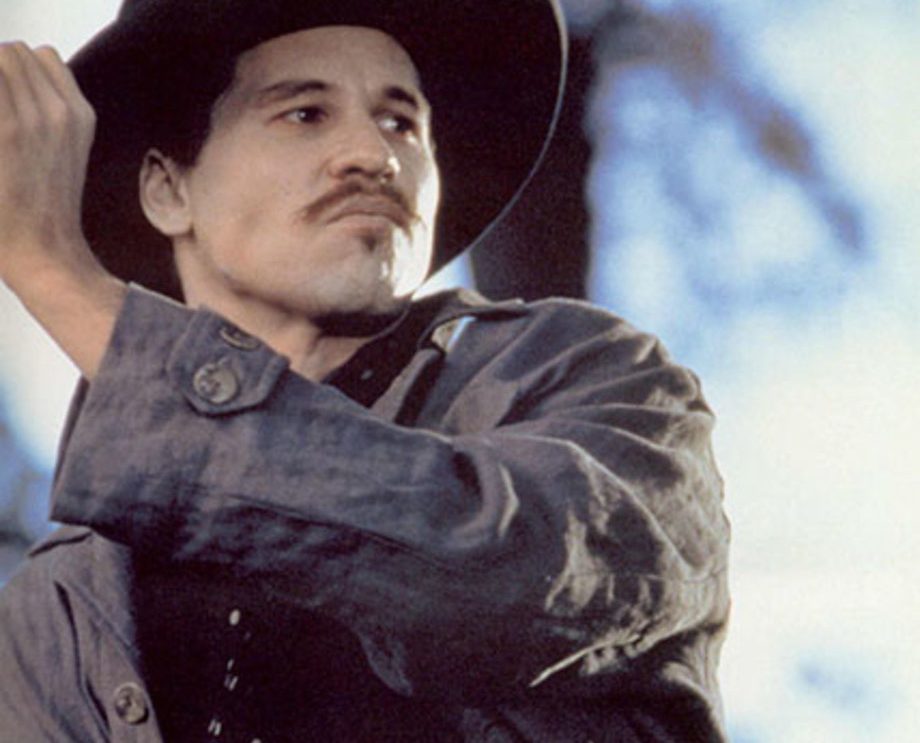
Having broken through in the 80s with the unparalleled silliness of Top Secret! and Real Genius, in 1993 Val Kilmer was still establishing himself as an actor to be taken seriously. So when he was offered the role of Doc Holliday, the Top Gun star jumped at the chance to prove his mettle. As a result, the actor devoted a lot of time to making his performance as gambler-gunfighter-dentist Doc Holliday as realistic as possible.
For one, Kilmer practiced his quick-draw speed until it was impressively fast, becoming the best in the Tombstone cast at the esoteric skill. Kilmer also personally took the creative decision to imbue Holliday with a Southern aristocrat’s drawl, and for good reason: Holliday was a cousin of Gone with the Wind author Margaret Mitchell. It’s rumoured that Mitchell even modelled the character of Rhett Butler (played by Clark Gable in the celebrated movie) on Holliday, which gave Kilmer good reason to use that distinctive voice.
15. All of the moustaches in the movie are absolutely genuine – except one
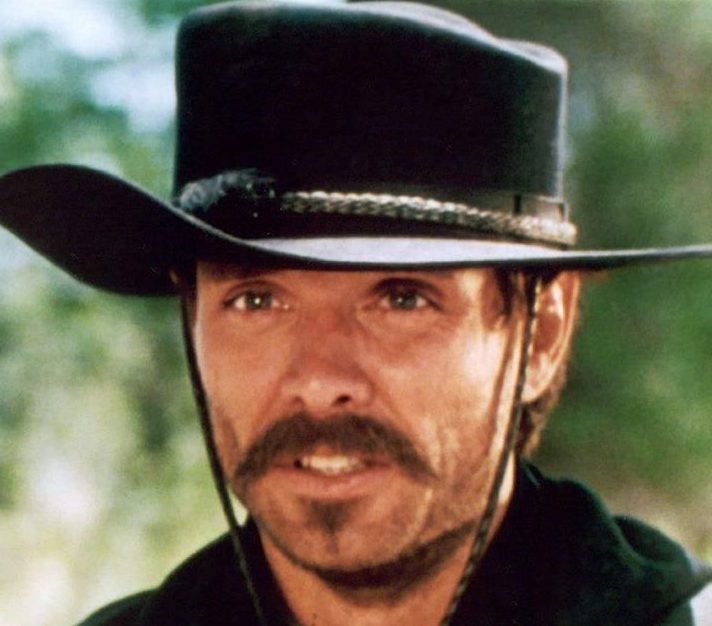
Tombstone’s screenwriter and initial director, Kevin Jarre, was a stickler for history. That meant he insisted on genuine moustaches on set, grown straight out of the actors’ faces. Almost to a man, bona fide facial hair is what we see in the film. It might shock the less hirsute among us, but Kurt Russell and Sam Elliott’s dramatic lip luggage is 100% real.
That’s according to Michael Biehn, who plays Johnny Ringo. Biehn was asked a rather pointed question by Movieweb in 2010: were you ever a little disappointed that your moustache didn’t carry as much flair as some of the other guys? “Jarre was very specific about how he wanted the moustaches,” Biehn replied, dodging the question. “He wanted them to curl up on the end … everyone was pretty proud that they grew their own moustache.” That is, except one: “There was one guy, Jon Tenney,” Biehn continues. “He didn’t get to grow his own moustache because he had a job right before that. They had to put a fake moustache on him. I think he always felt a little bit like the small dog of the group.”
14. Billy Bob Thornton improvised every single one of his lines

You may remember Billy Bob Thornton playing a bully by the name of Johnny Tyler in Tombstone, but did you know that he improvised every single one of his lines? Given that the film’s gargantuan script had led to the director-screenwriter, Kevin Jarre, being fired, it’s interesting to learn that Johnny Tyler had no listed lines at all. Instead, Thornton was instructed by the film’s ghost-director, George P Cosmatos, simply to “be a bully” when facing Kurt Russell’s Wyatt Earp. According to the DVD audio commentary, Cosmatos claims the confrontation was meant to show audiences Earp’s style as a lawman. When he throws Tyler out of the saloon, he begins with psychology.
For example, Earp slaps Tyler multiple times. In contrast to throwing a punch, a slap catches Tyler off-guard and forces him to back down. Billy Bob Thornton rose to stardom in the late 90s via such films as Sling Blade, A Simple Plan and Armageddon; he also attracted tabloid interest from his short-lived marriage to Angelina Jolie.
13. Val Kilmer really can roll a coin across his knuckles
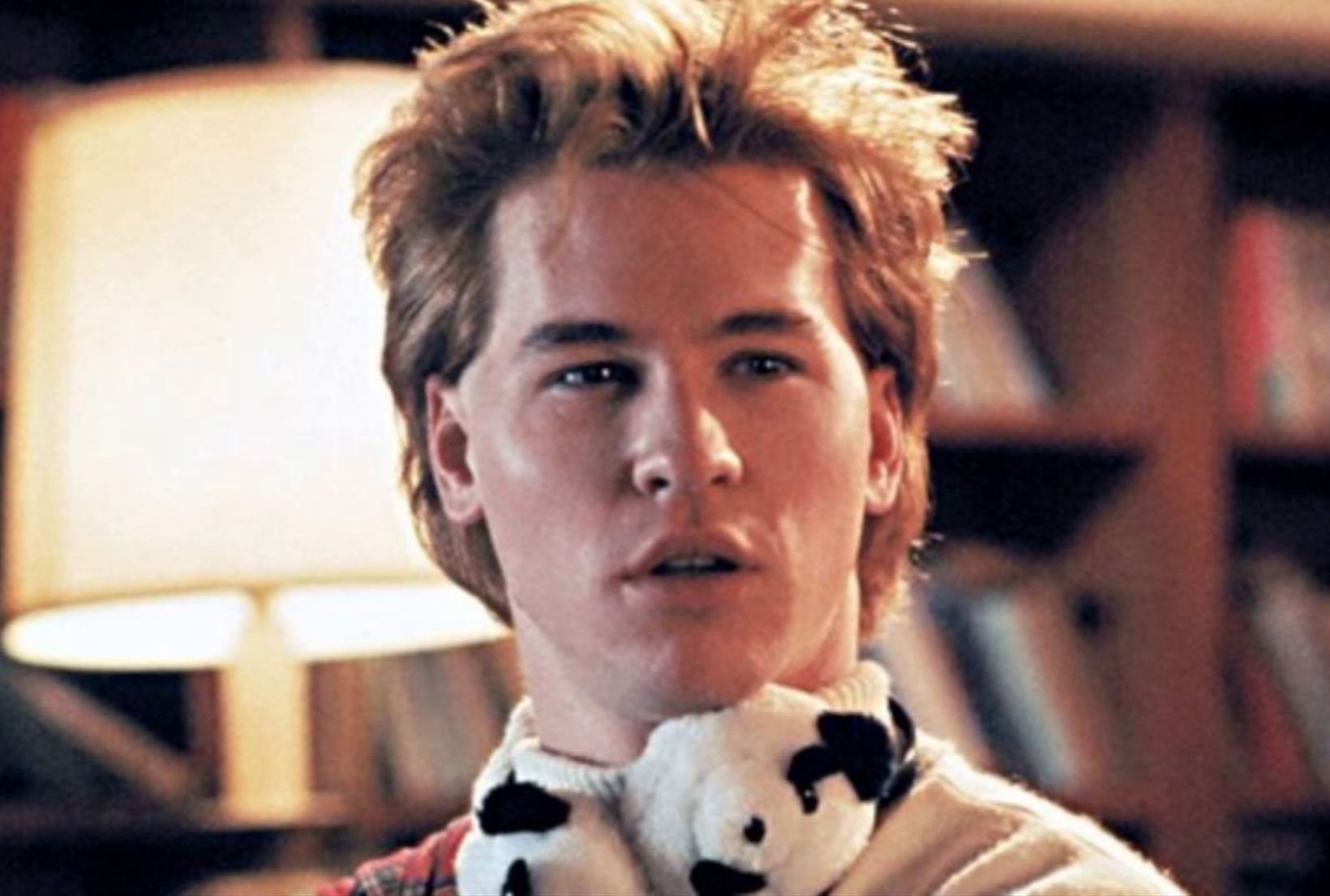
It looks good enough as it is, but seeing Val Kilmer’s Doc Holliday rolling a coin across his knuckles is even more impressive when you consider that the actor was doing it for real, without any camera trickery to assist him. Whether or not the real Doc Holliday could perform this parlour trick is up for debate, but in the film it has clear function: to tell the audience that this isn’t Holliday’s first gambling rodeo.
However, while Kilmer put a great deal of effort into his preparation for the film, this was a trick he didn’t need to practice. In fact, there are several examples of Kilmer’s digital dexterity on film, before and after Tombstone. The first can be seen in Kilmer’s sophomore effort, 1985’s Real Genius, in which the actor walks two quarters across his knuckles. The following year, in Top Gun, Kilmer did the same with a pen – not to mention balancing a volleyball in his fingertip in that scene. Honestly, it’s a shame we never got to see Kilmer do anything similar with a Batarang in 1995’s Batman Forever, the actor’s one turn as the Caped Crusader.
12. Ike Clanton actor Stephen Lang is genuinely drunk in all of his scenes
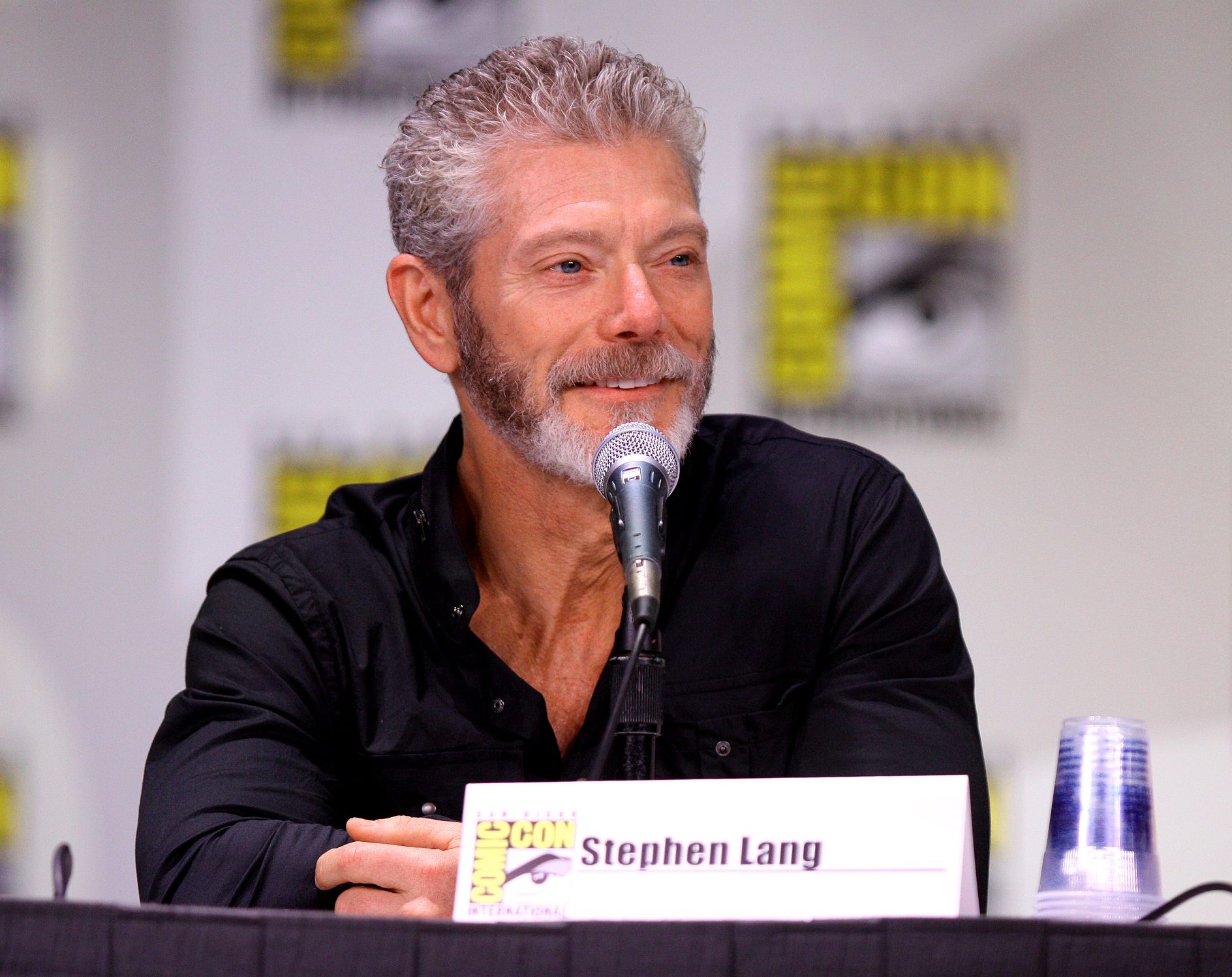
Tombstone has a terrific ensemble cast – so starry, in fact, that supporting actor Stephen Lang is often overlooked. Lang, who has also starred in such films as Avatar and Don’t Breathe, is a respected screen actor – but for Tombstone, he didn’t have to do much acting. That’s because Lang plays Ike Clanton, the drunk outlaw who does little but gibber in the face of Wyatt Earp. And, while Lang might be a respected actor, much of the drunkenness we see is genuine.
“You want stories? There are a lot of stories on Tombstone,” Lang told Slash Film in 2018. “…During my time in Arizona, I don’t know if I’d ever had a drink of water, but I’d certainly drank a lot of tequila, I know that.” This heavy drinking, while realistic, ended up causing significant issues for the actor. “After three and a half or four months in Arizona,” Lang continues, “I went directly to Glenwood Springs, Colorado to begin filming Tall Tale. And within a day or so there [I] was struck down by what turned out to be a galaxy of kidney stones. There I was, flat on my back in the hospital in Glenwood Springs, which is the town in which Doc Holliday had died … So my whole thing was, you know, ‘Ike Clanton ain’t gonna die with his boots on or off, and he ain’t gonna die in Glenwood Springs.'”
11. Ike Clanton was originally meant to be played by Robert Mitchum
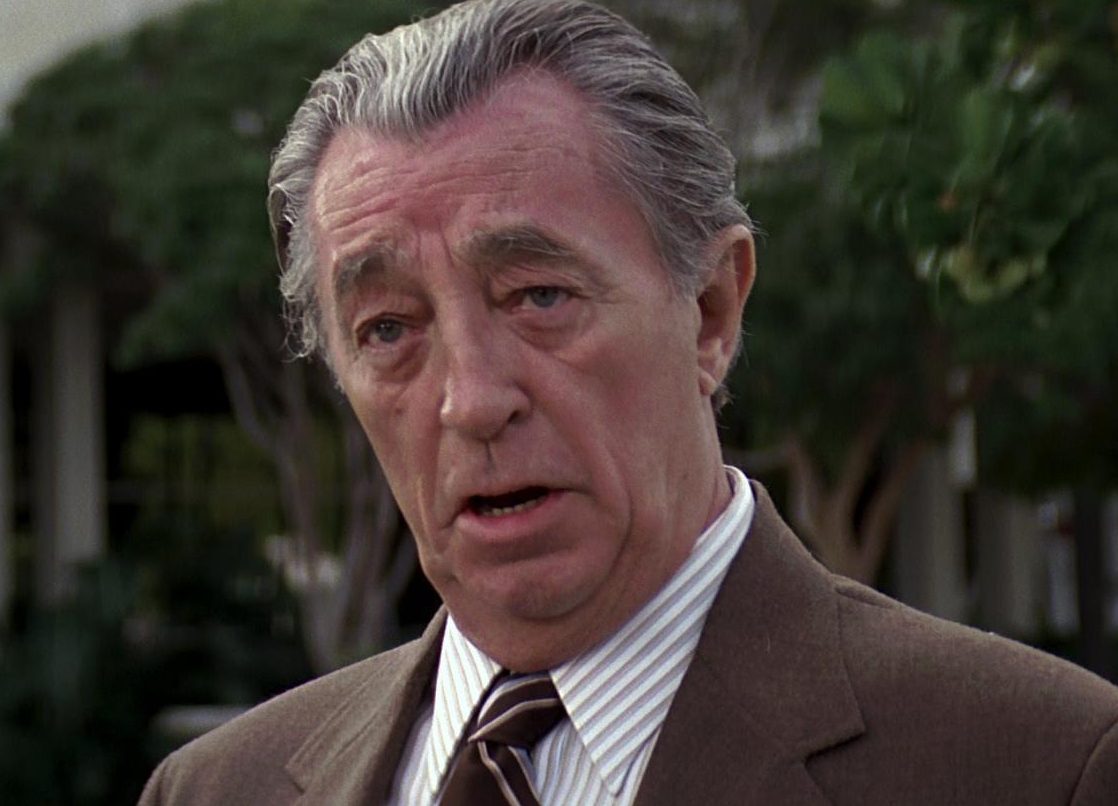
Tombstone has quite the cast – and that’s only counting the actors we see on-screen. Arguably the biggest star of Tombstone doesn’t actually appear at all. Screen legend Robert Mitchum serves as the film’s narrator, but he was originally meant to have a much bigger role. Mitchum was known as one of cinema’s bad boys, whose performances foreshadowed the rise of the antihero in 50s and 60s cinema. As is relevant to Tombstone, Mitchum was also known as a western actor.
The most famous of Mitchum’s westerns is perhaps River of No Return, in which he stars alongside Marilyn Monroe. In the film, Mitchum’s widower becomes smitten with dance hall singer Monroe. Also, they fight off Indians – after all, this was released in 1954. River of No Return has been cited as an inspiration for Tombstone, so it’s no surprise that Mitchum was hired initially to play the 1993 film’s Ike Clanton. Sadly, prior to shooting, Mitchum was injured after falling off a horse and had to drop out, an injury that’s at least western-appropriate. Nonetheless, Mitchum was able to provide narration for the film. He would die six years later, at the age of 79.
10. Val Kilmer was not the first actor to play both Doc Holliday and Batman

After Val Kilmer’s winning performance in Tombstone, the offers came rolling in. Not least among these was the title role in Batman Forever. After Michael Keaton declined to reprise his role, and Tim Burton left the film after a McDonald’s tie-in fell through (yes, really), Kilmer was chosen to play the new Batman/Bruce Wayne.
However, as improbable as it might seem, Kilmer wasn’t the first actor to make the leap from cowboy to cowl-bat. That honour belongs to Adam West. West had played Doc Holliday not once, but three times, in three different TV shows: Colt .45, Lawmen, and Sugarfoot. It was on the basis of this success that West was hired to star in the 1960s TV series Batman – and the actor would be synonymous with the role for the rest of his life. (West died in 2017, aged 88.) Given the hyper-camp of West’s Bat, the warning signs were all there for Kilmer, who had such a bad time playing the role that he declined to return for the notorious follow-up Batman & Robin.
9. The witty tombstone is real

The town of Tombstone has certainly leaned into its unconventional name – for starters, its local newspaper is known as the Tombstone Epitaph. But did you know that the literal tombstone epitaph seen in the film comes from a real grave? Early in the movie, setting the tone for the film’s dark humour, we see a headstone inscribed with the epitaph “Here lies Lester Moore, Four Slugs from a .44, No Les No More.”
This whimsical message comes from a real grave found in a Tombstone cemetery. (People back then were maybe a little too comfortable with death.) However, despite the inscription being genuine, the grave we see in the film isn’t the one that’s found in the real Tombstone. Instead, it’s from a theme park. Some of Tombstone’s filming took place in Knotts Berry Farm, a southern Californian theme park. There, in its Wild West area, resides a replica tombstone bearing that very inscription.
8. George P Cosmatos was good friends with Dollars trilogy director Sergio Leone

The 90s revival of the western genre owes a lot to Sergio Leone, the legendary writer and director. In fact, Leone counts as one of the true godfathers of the genre, surpassed arguably only by John Ford. So, were anyone on Tombstone a friend of Leone’s, that would certainly be useful… that’s exactly what George P Cosmatos claims in the DVD audio commentary for Tombstone. Cosmatos, a Greco-Italian director, counted Leone as a personal friend back in Italy, drawing much inspiration from how Leone blends American and Italian mythologies in his films. Leone is best known for his Dollars trilogy, the series that launched Clint Eastwood’s career and sees the Man with No Name bring justice to small towns – and then ride off again.
The influence of Leone on Tombstone was not lost on critics, with the Austin Chronicle noting in a contemporary review (which is otherwise equivocal) that “the film begins like a Sergio Leone Western.” Exactly how much the tangential Leone connection influenced Tombstone is up for debate, especially given Kurt Russell’s status as the ‘true’ director. But we do hear from Cosmatos that Leone was “a lovely man.”
7. A genuine cousin of Wyatt Earp’s (himself named Wyatt Earp) appears in the film
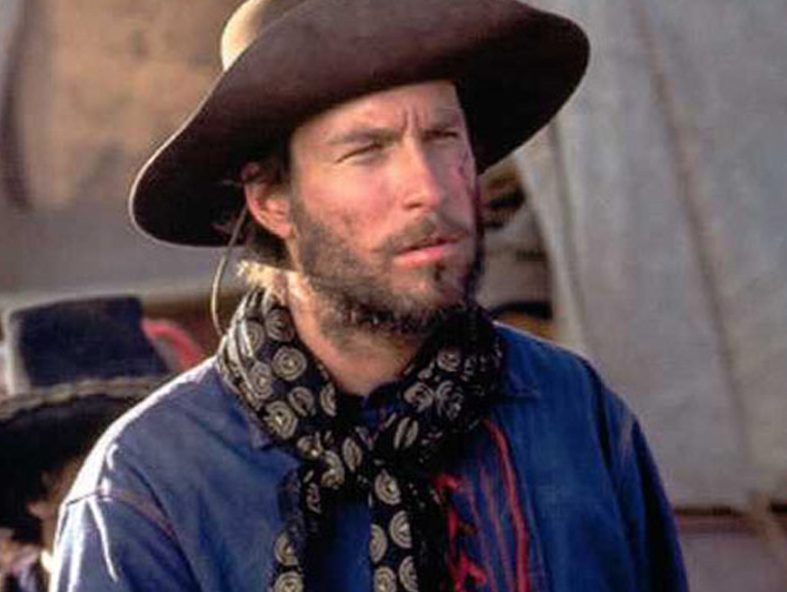
It beggars belief, but Wyatt Earp isn’t just a character in the film: he stars in it, too – amazing considering the legendary lawman died in 1929. We’re kidding, of course, but a Wyatt Earp really does star in the film. Earp’s fifth cousin, who goes by the same name, has a minor role as the outlaw Billy Claiborne. The real-life Claiborne was indeed present at the Gunfight at the OK Corral, but was unarmed and fled. He became a drunk, and was later killed by a bartender with whom he came to blows.
Wyatt Earp III is a descendant of the original Earp’s older half-brother, Newton. Following Tombstone, the actor took a break from Hollywood. He would later reappear as the airport announcer in 2008’s Pretty Ugly People, and star as Sheriff Danford in TV’s Sordid Lives. The actor claims his name has been a hindrance, rather than a help, to his career.
6. The real-life Wyatt Earp went on to work in Hollywood
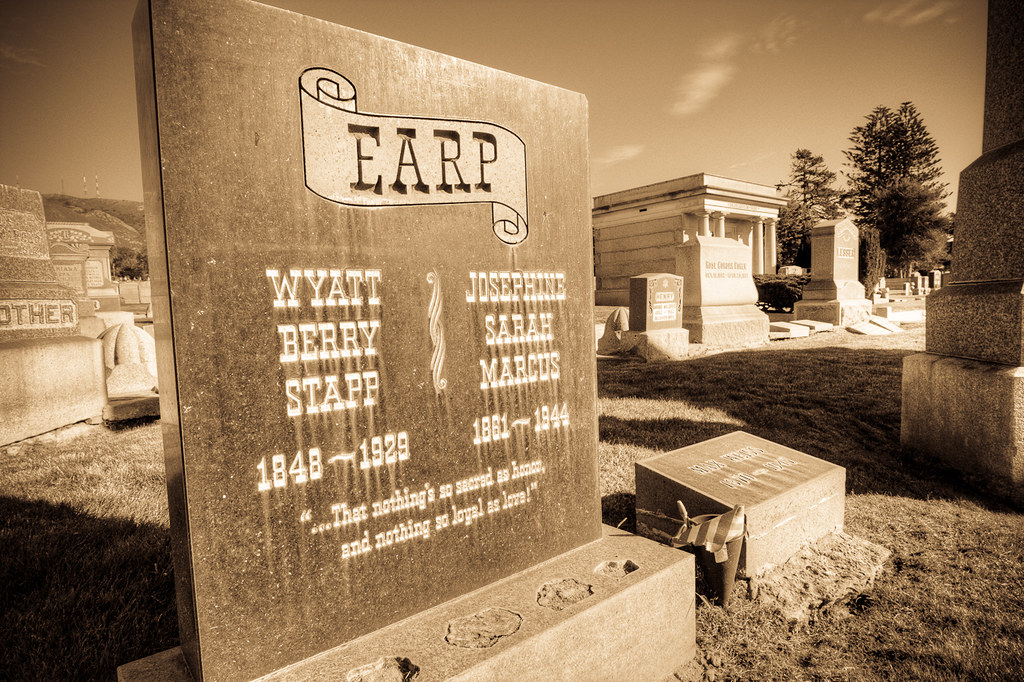
The lives of legendary Wild West figures often end in ignominy. Whether it’s being butchered by outlaws, rotting in jail, or drowning in a bottle, even the most respected lawmen tend to fall from grace. For the real Wyatt Earp, it’s complicated. The man himself never regained the legendary reputation he garnered at the OK Corral.
However, Earp continued to be employed as a bounty hunter and lawman – formally and informally – for decades. Eventually, having been arrested for attempting to con a man during a poker game, and having failed to get a mining business operational, Earp became a film consultant for early Hollywood films. The former sheriff became fast friends with famous movie cowboys William Hart and Tom Mix (above), encouraging Hart to star in a biographical film about his life. After being rebuffed by Hart, Earp instead employed a former mining engineer to write his biography. A century later, the hero of the OK Corral is legendary.
5. More than 100 horses were used in the shooting of the film
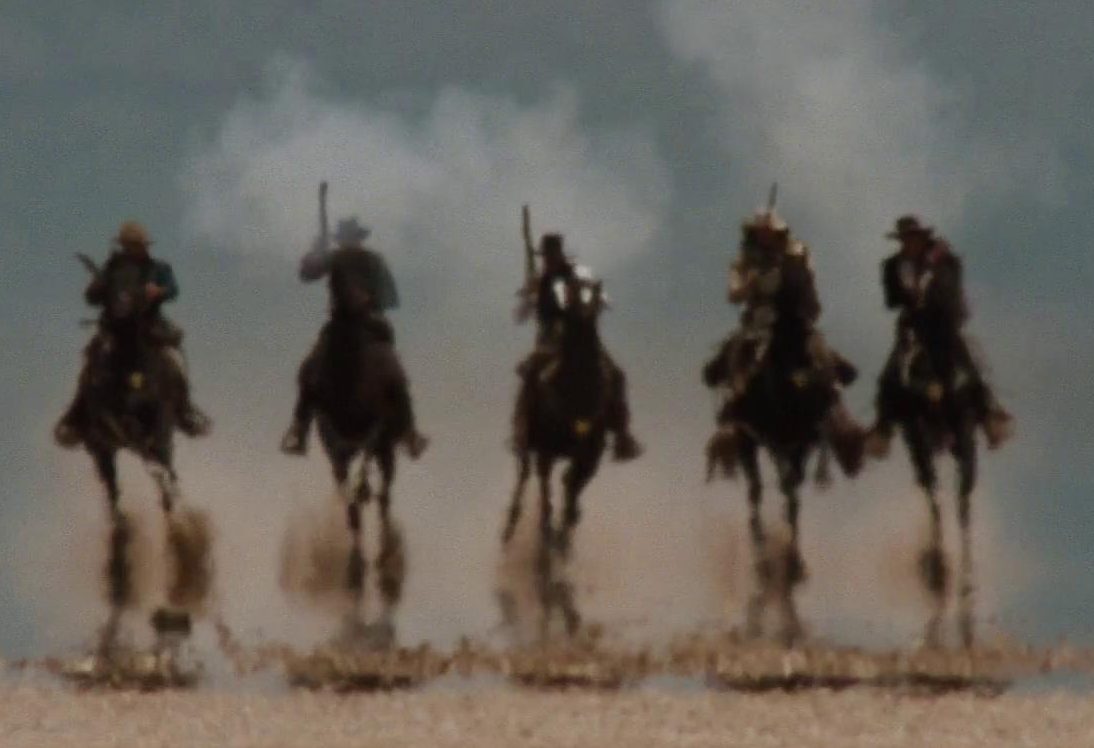
What’s a western without horses? After hats and guns, man’s trusty steed is probably the most important component of the genre – even more important than facial hair, and we know how intense Tombstone’s efforts were on that front. So it should come as no surprise that multiple equine actors were needed to make Tombstone a convincing flick. What’s surprising is just how many were required.
In total, a staggering 123 horses were used in the course of Tombstone’s production – and, as elegant as horses may be, they can’t look after themselves. As a result, an equally staggering 60 crew members were employed just to look after the horses. Unfortunately there’s no word on how many pitchforks they had, and how much they shovelled, which would have made for quite the statistic. It just goes to show that there’s so much more going on behind the scenes than what ends up on camera, and it explains why some films cost millions of dollars to produce.
4. A love scene between Wyatt Earp and Josephine was cut
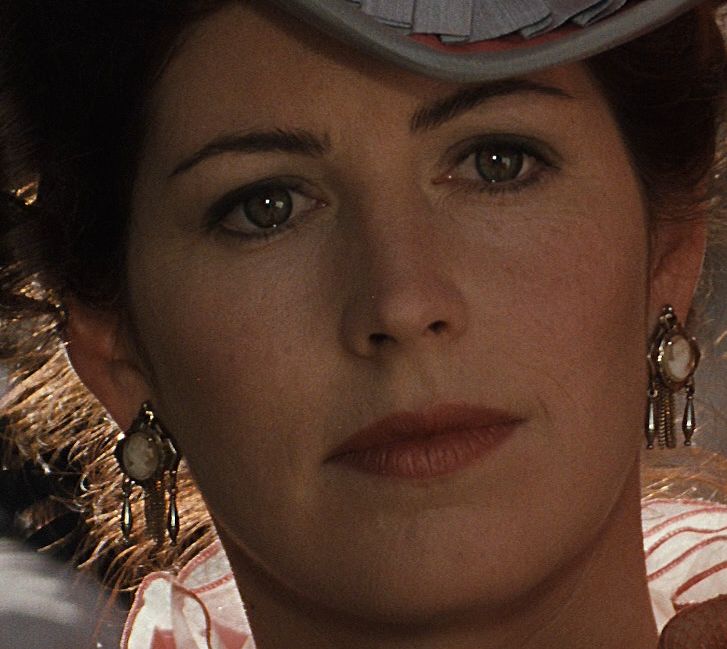
Like any good Hollywood film, Tombstone has a love story at its core. For Wyatt Earp, his affair with Josephine Marcus is his motivation for staying alive in a town he regards with apathy. Originally, the love story between Russell’s Earp and Dana Delaney’s Marcus was originally going to be a bigger part of the film. In fact, the two actors shot a sex scene which was ultimately cut from the movie.
Cosmatos hints in the DVD audio commentary that he didn’t want the pair to consummate their marriage so quickly, feeling it was inauthentic to the characters. Nonetheless, footage of this scene found its way into early trailers. Of all the characters in the film, Josephine is perhaps the most fictionalised; at one point we see her posing for a nude photograph, ‘Kaloma’, in Fly’s photographic studio. It’s now disputed that the woman in the photograph is even Josephine Earp. Furthermore, it’s likely that Josephine wasn’t even in Tombstone at the time of the Gunfight at the OK Corral – but what’s a western confrontation without beautiful women looking on?
3. Val Kilmer laid on a bed of ice to shoot his death scene
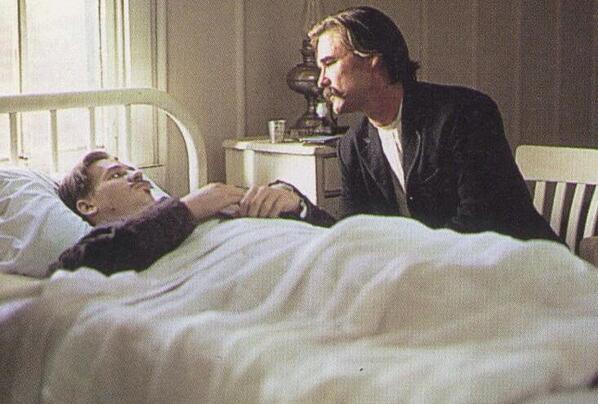
Doc Holliday is a tragic character, and Val Kilmer plays him as such. It’s heavily hinted at the outset that Holliday is dying of tuberculosis, a common affliction of the time, and he effectively saves Wyatt’s life by taking his place in the duel with Johnny Ringo. Sadly, tuberculosis waits for no man, and Holliday ultimately dies of his illness in the film. Despite swearing he’d die with his boots on – that is, in combat – Holliday instead dies in hospital.
To make his death scene all the more convincing, Val Kilmer requested that he lay on a bed of ice. Stuttering and shivering to simulate the onset of a gruesome death, Kilmer’s strange request paid off as the scene proved so effective. The lengths to which Kilmer went for his role shouldn’t be surprising. In 1991, he starred as Jim Morrison (to whom he bears a striking resemblance) in The Doors. For a year prior to shooting, Kilmer learned all the band’s songs by heart as well as wearing Morrison’s clothes and hanging out at bars he frequented. Compared to that, a bed of ice is child’s play.
2. Everyone had to wear wool on-set for maximum accuracy

According to 2018’s The Making of Tombstone: Behind the Scenes of the Classic Modern Western, by John Farkis, initial director Kevin Jarre’s obsession with period accuracy sometimes went a little too far. This included forcing the actors to wear era-appropriate wool clothing, even in the sweltering Arizona heat. “I found it a little inconvenient that Jarre insisted on our wearing real wool,” Farkis quotes Val Kilmer as saying.
“‘It has to be wool. You can tell the difference,’ he said. Well you can’t, Kevin Jarre. You can’t tell the difference between real wool and any blend, even in a macro close-up, okay? In a wool suit,” Kilmer continues, “being Doc was easy to do. That was my theory about why Doc killed so many people. It’s just like he wore wool … and that made him mad.” Not only did the actors have to contend with the blazing Arizona heat, but at night they filmed under hot lights. Several crew members became so dehydrated they fainted on set.
1. George P. Cosmatos’ Tombstone royalties funded the first film of his son Panos Cosmatos

Even though it’s claimed that Kurt Russell was the real man behind the curtain for Tombstone, George P Cosmatos’ name was on the credits; as such, Cosmatos received royalties from the film. This is especially important because, while the film was a modest financial success (grossing $56.5 million on a $25 million budget), the film’s reappraisal as a cult classic led to strong sales on home video. New editions were released in 1997, 2002, and onwards through to 2010. Still, George P Cosmatos didn’t spend much of the funds he earned through royalties for Tombstone. After tragically dying of lung cancer in 2005, the money passed instead to his son and fellow director Panos Cosmatos. The younger Cosmatos, who would later go on to acclaim with the Nicolas Cage-starring 2018 horror film Mandy, has claimed that his debut feature was funded almost entirely with these royalties.
Beyond the Black Rainbow is a science fiction film released in 2010. Fittingly, Cosmatos describes it as having been a healing process after his parents’ death. “My mother and father haunt every frame of this film,” he told Eye For Film in 2011.

